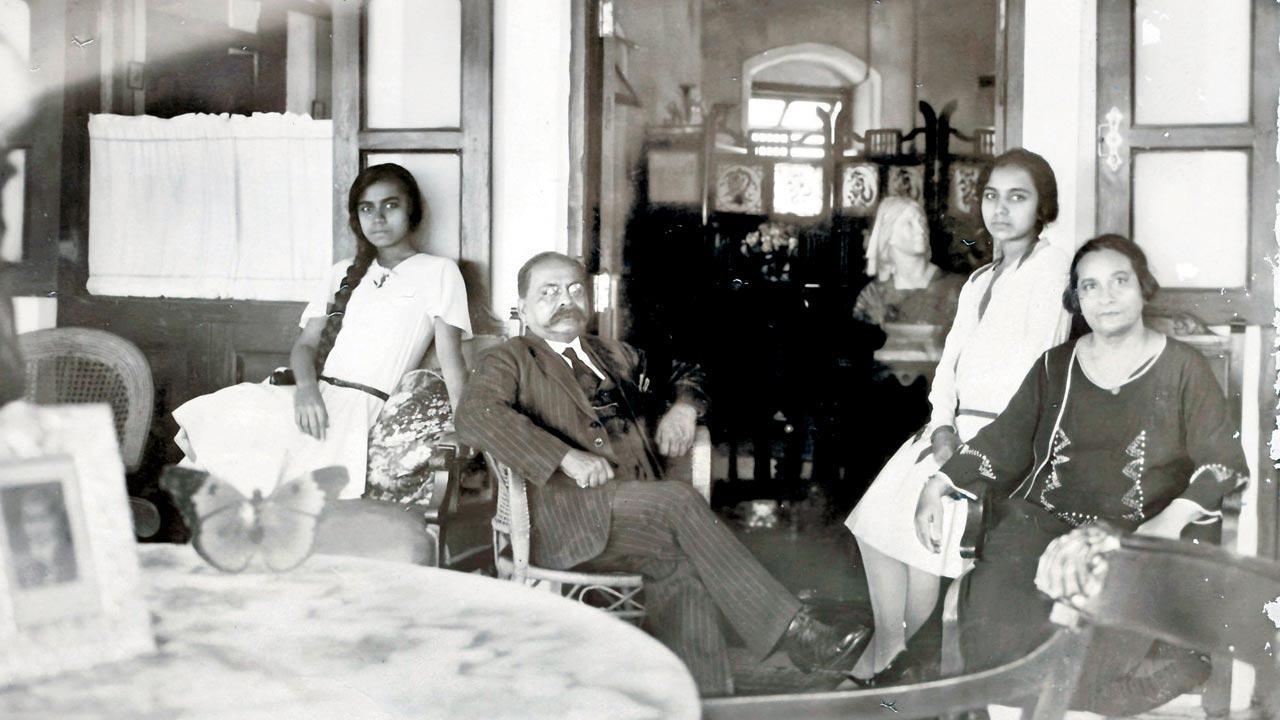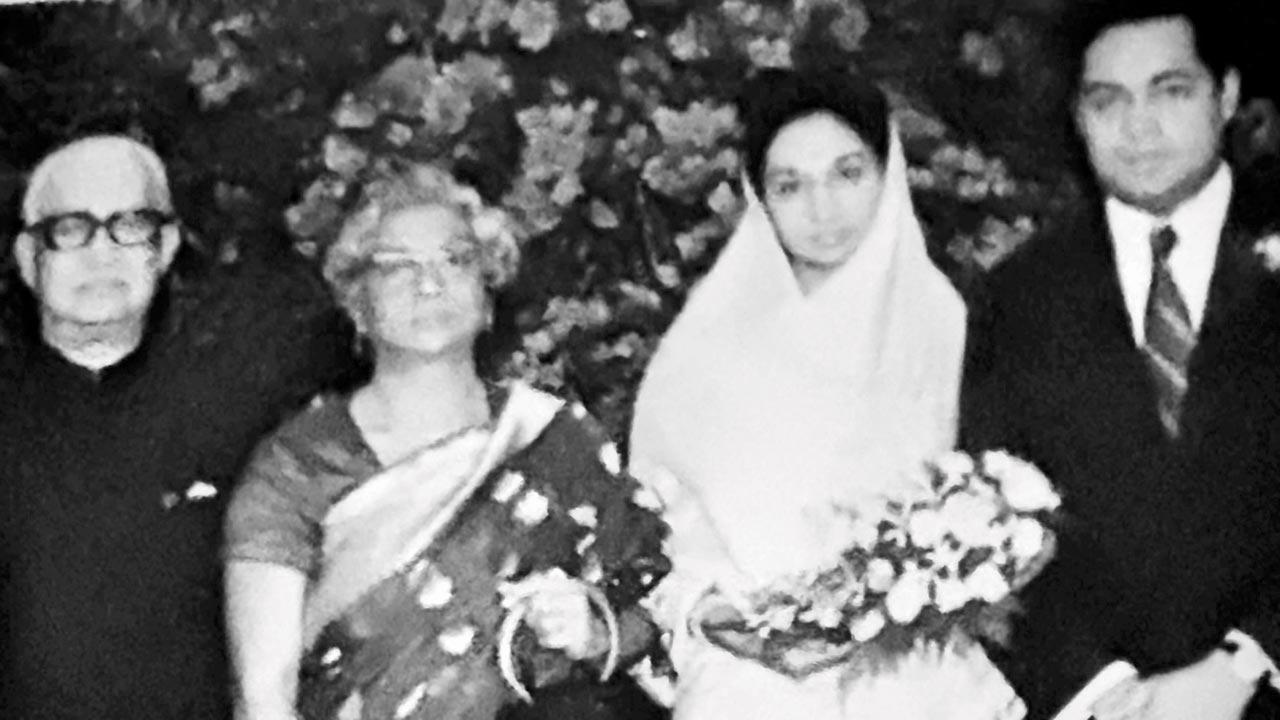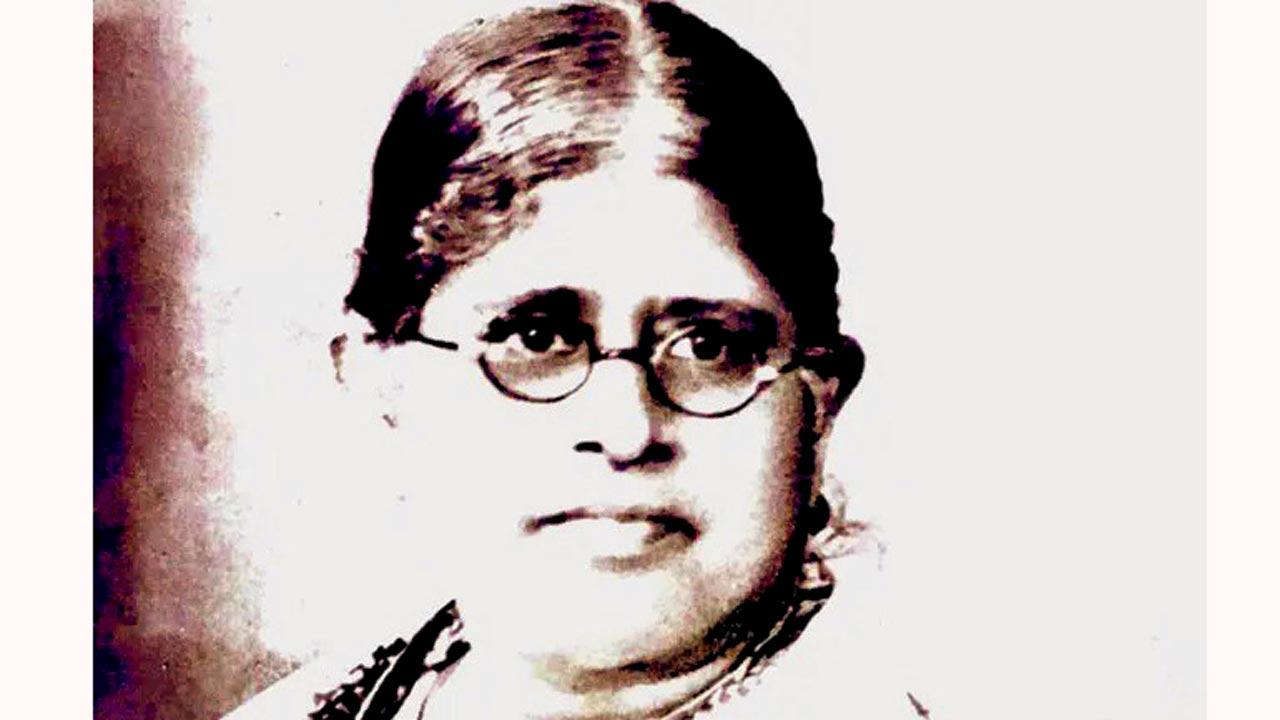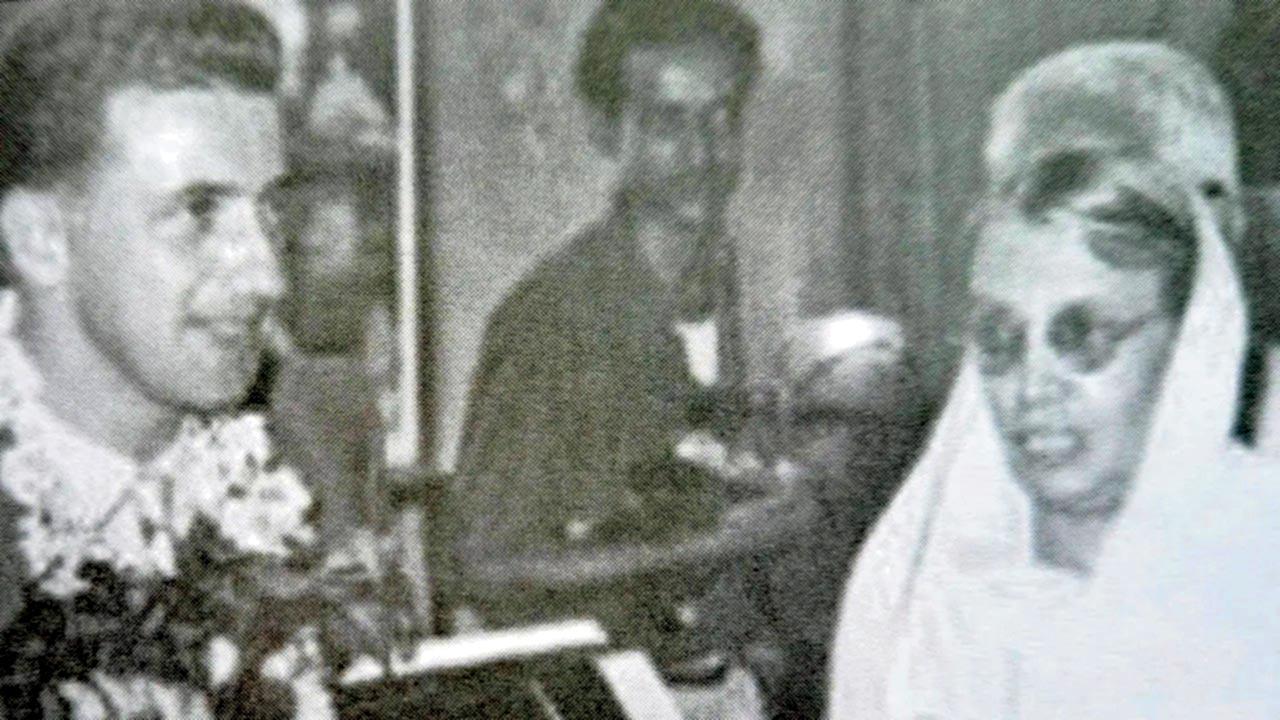A salute to Bombay’s pioneer women of medicine on the occasion of National Doctors’ Day

India’s first woman doctor Dr Cecilia Rose D’Monte with her husband Dr DA D’Monte and daughters Beryl (left; mother of writer Dom Moraes) and Gladys, in Summit View, their ancestral home on Bandra Hill
 Tomorrow is the date of his birth as well as his death. Separated by 80 years of an outstanding innings of service and statesmanship. From July 1, 1882 to July 1, 1962, Dr Bidhan Chandra Roy rose to become the country’s pre-eminent physician and ruled as chief minister of West Bengal from 1950 until his death. Qualified as MRCP FRCS, Dr BC Roy was the inaugural president of the Cardiological Society of India and contributed immensely to medical education. He believed that swaraj as a call to action for freedom from the British was futile if not wrested by a people strong in body and mind.
Tomorrow is the date of his birth as well as his death. Separated by 80 years of an outstanding innings of service and statesmanship. From July 1, 1882 to July 1, 1962, Dr Bidhan Chandra Roy rose to become the country’s pre-eminent physician and ruled as chief minister of West Bengal from 1950 until his death. Qualified as MRCP FRCS, Dr BC Roy was the inaugural president of the Cardiological Society of India and contributed immensely to medical education. He believed that swaraj as a call to action for freedom from the British was futile if not wrested by a people strong in body and mind.
ADVERTISEMENT
To commemorate his ideals, July 1 is designated National Doctors’ Day. The right time to honour pioneering women doctors from Bombay.
In a life cut short tragically by tuberculosis, Anandibai Joshi (1865-1887) acquired the distinction of being the country’s first lady physician and also the first Indian woman to complete her studies in Western medicine from the United States. The Women’s Medical College, Pennsylvania, admitted her for a two-year degree when she was 19, impressed by her singular aim: to administer to Indian women patients who would rather risk dying than be treated by a male physician. Stunned tutors noticed she was the sole student to sit unflinching in an autopsy session where an infant cadaver was dissected.
 Anandibai Joshi, the first woman physician from India to have trained abroad in the US, with her batchmates—who went on to become the first women physicians of Japan and Syria respectively—Kei Okami and Sabat Islambooly of the Women’s Medical College, Pennsylvania. Pic/Wikimedia Commons
Anandibai Joshi, the first woman physician from India to have trained abroad in the US, with her batchmates—who went on to become the first women physicians of Japan and Syria respectively—Kei Okami and Sabat Islambooly of the Women’s Medical College, Pennsylvania. Pic/Wikimedia Commons
Fate stepping in cruelly, she died soon after the Albert Edward Hospital in the princely state of Kolhapur appointed her physician-in-charge of its women’s wards. Her shining example subsequently inspired thousands of Indian women to take up a profession allowing them to forge their own identity, which till then was predominated by men.
The lasting public welfare achievements of a legendary doctor-philanthropist couple have christened D’Monte Park Road in Bandra. Dr DA D’Monte, grandfather of journalist Darryl D’Monte, donated massive adjacent plots of land for the Salsette Society, including the 1935-founded Bandra Gymkhana. His gynaecologist wife, Dr Cecilia Rose D’Monte (1875-1940), enjoyed high regard in medical circles. She was the first Indian chief medical officer at the 1886-established Cama and Albless Hospital at Dhobi Talao, and the first woman appointed to the Bombay Medical Council. House surgeons of the hospital have her grant of R16,000—extremely generous in those years—to thank for hostel quarters on campus.
Strongly feminist, young Cecilia Ferreira had been the recipient of any number of proposals from prominent East Indian families, including that of a leading lawyer. She declined, sensing reluctance by way of a frank answer to the only question she posed: Will I be able to continue my work? From the family of Dr Dominic Anaclete D’Monte came the clear reply that decided things: “You can do anything you want to.”
 Dr Juliet De Sa Souza at her daughter Lynette Saldanha’s wedding in 1972
Dr Juliet De Sa Souza at her daughter Lynette Saldanha’s wedding in 1972
That was a liberal-minded response for the late 1800s, points out psychoanalyst Zarine D’Monte, Dr Cecilia’s granddaughter-in-law. There ensued the expected struggle between career and motherhood when she had three children. She would routinely rush home (to Summit View, the ancestral D’Monte bungalow on Bandra Hill near Mount Mary’s Basilica) to feed them dinner after a long day at the hospital. And brave it back there to work late into the night. Determinedly, she travelled this distance daily through the years following the 1896 plague outbreak.
“She chose the man who let her be everything she aspired to,” says Zarine, introducing me to her niece Sunita, the great-granddaughter of Cecilia D’Monte. “I have heard how devoted she was to her practice and how patients grateful for her care even offered small pieces of jewellery,” says Sunita.
D’Monte’s obstetrician contemporary, Dr Kashibai Navrange (1878-1946), was as much a social reformer. The first Indian woman doctor to open her own clinic in Bombay—in 1907 at Bhuleshwar— her garbhavati chikitsalay for pregnant women provided free medication to the poor among them. Engaging in multiple social development activities, she was closely associated with the Prarthana Samaj begun by Atmaram Pandurang and the Arya Mahila Samaj started by Pandita Ramabai to help underprivileged women. In 1916-17, under the Arya Mahila Samaj, she initiated a milk fund for lactating mothers, which supplied free milk to expecting mothers too. A tree-shaded street named for Kashibai Navrange is tucked away in a quiet part of Gamdevi, as is a hostel for women students.
 Dr Kashibai Navrange, the first woman doctor to open a clinic in the city in 1907
Dr Kashibai Navrange, the first woman doctor to open a clinic in the city in 1907
Not far from here, a still-standing Babulnath property once held the home and hospital of a luminary in the field of maternal health. Over the phone from New Zealand, Lynette Saldanha shares a history of De Sa’s Hospital and her mother, Dr Juliet De Sa Souza (1915-1987)—one of the first Indian women to be elected Fellow of the Royal College of Surgeons, Edinburgh. Buying the building opposite Bombay Garage at Babulnath, Saldanha’s gynaecologist grandfather, Dr Herculano De Sa, opened this institution as a 1930s maternity facility. He was joined by his daughter Juliet.
“I’ve met hundreds of women around the world telling me how tenderly ‘Dr Juliet’ delivered them and their babies. My mother was like chocolate with a soft centre, swayed by any sob story,” says Saldanha. “A professor and head of department in Grant Medical College, she is as well remembered by her students with the greatest admiration and affection.”
Marvelling at her mother juggling heavy government hospital schedules and her private nursing home hours, Saldanha says, “I don’t know how she brilliantly balanced it all. When I was just six, she told me, ‘You must grow to stand on your own two feet’. It stuck in my head. She pushed me to study Economics at Cambridge and work for the UN. My oncologist brother, Dr LJ de Souza, and I, had a wonderful role model in her. Living a floor above the clinic, we grew up with the sight of blood, to put it bluntly. ‘Mummy, I’m going’, we unfailingly announced every morning before leaving for school. She came out in an apron covered in blood to say, Bye and, if possible, give us a quick kiss each. If it was possible to grab some short afternoon rest between morning births and evening consultations, that was disturbed by me running straight to her bed to babble about my day at St Anne’s.”

Dr Jerusha Jhirad welcoming Reform Rabbi Hugo Gryn of Britain to Bombay
Whether attending to film stars or to the poorest women, “Dr Juliet” treated everyone the same. She sustained the community service tradition of weekly free clinics for more than 50 years, till the obstetrics section shut before her death at the age of 76.
Other doctors launched movements which ushered in epic changes to the socio-religious milieu of their times. Dr Jerusha Jhirad (1890-1983), a gynaecologist, returned in 1925 from medical studies in England and introduced the reformist Jewish Religious Union. This democratic congregation facilitates two revolutionary aspects. Welcoming women rabbis to the fold, besides encouraging women to worship and sing in the synagogue, the group also makes accessible translations of Hebrew prayers for community members to better understand their faith.
Eventually realising her ambition to be a reputed physician and obstetrician, Jhirad always yearned “to be a doctor, take the London MD and be in charge of Cama Hospital”. Those objectives were the result of a story she was told about her elder sister’s serious illness, which a Dr Benson at Cama Hospital controlled, saving her sibling’s life. Under her guidance, undergraduate and postgraduate training facilities for women medical students were provided and Cama Hospital was affiliated to the GMC as a teaching hospital for women students of obstetrics and gynaecology. The outpatient department, a pathological laboratory, diagnostic X-ray department, additional quarters for nurses and residents, and a hostel for postgraduate students were far-reaching extensions carried out during her tenure.
Under the aegis of the Indian Research Fund Association (formed in 1911 by the Government of India, it was the forerunner of the Indian Council of Medical Research), Jhirad conducted a statistical enquiry into the causes of maternal deaths in Bombay. She consequently recommended urgent improvements in housing, slashed food prices, education to raise awareness on the need for balanced diets and the organisation of a blood transmission service.
A founder-member of the Federation of Obstetrical and Gynaecological Society of India, and chairperson of the Maternity and Child Welfare Advisory Committee of the Indian Council of Medical Research, Jhirad was awarded the Most Excellent Order of the British Empire (MBE) in 1945 and the Padma Shri by the government of India in 1966.
There is, incidentally, the unique presence of three Indian women on Venus. Jhirad and Joshi (spelt Joshee for outer space) are two; the third is reformer-educationist Pandita Ramabai. They proudly name a trio of craters on the solar system’s hottest planet, where identified craters acknowledge women across the globe for commendable contributions to their fields. They are listed in nomenclature specifically approved by the International Astronomical Union. Of the approximately 1,000 craters named on Venus, the largest known is called Mead, after American anthropologist Margaret Mead.
Remarkable, indeed, that the three Indian women illuminating the morning star planet were all trailblazers from Bombay, tireless in their efforts to convert
dreams for a better future into wonderful reality.
Author-publisher Meher Marfatia writes fortnightly on everything that makes her love Mumbai and adore Bombay. You can reach her at meher.marfatia@mid-day.com/www.meher marfatia.com
 Subscribe today by clicking the link and stay updated with the latest news!" Click here!
Subscribe today by clicking the link and stay updated with the latest news!" Click here!







